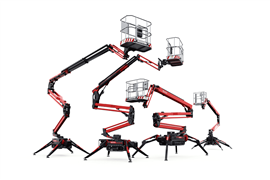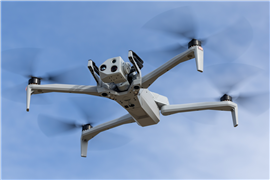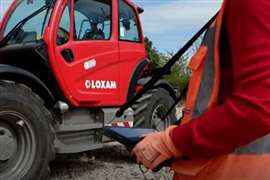How telematics is changing equipment rental
06 December 2022
With telematics providing sophisticated information about construction machinery, KHL writer Lucy Barnard finds out how rental companies are using data to boost efficiencies.
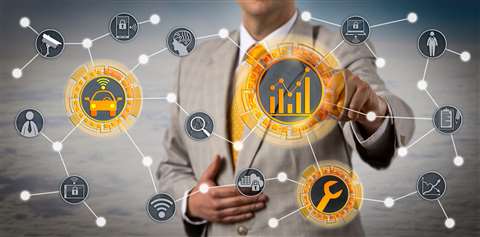 Rental companies are making greater use of telematics as the technology continues to evolve. (Photo: Adobe Stock)
Rental companies are making greater use of telematics as the technology continues to evolve. (Photo: Adobe Stock)
“There is so much more that we can do with telematics,” says Vincent Ranaivoson, group transformation officer at French rental giant Kiloutou with an equal mixture of enthusiasm and frustration as he scrolls through yet another spreadsheet.
As the man in charge of masterminding how to collect, use and present to customers the telematics data generated by the 250,000 pieces of equipment at Europe’s fourth largest rental company, Ranaivoson is keen to take advantage of new developments in telematics.
Telematics for rental fleets
Telematics, which uses sensors placed on engines to provide intricate data on vehicle location and use, has become more and more important to plant hire companies.
They primarily use telematics to check that rented machinery has not been stolen and that it is being used in accordance with the rental agreement.
 Vincent Ranaivoson, chief transformation director at Kiloutou. (Photo: Kiloutou)
Vincent Ranaivoson, chief transformation director at Kiloutou. (Photo: Kiloutou)
Basic information it may be, but telematics companies say that data about the exact location of machinery and the amount of time it has been used, is still top of the list for the things rental companies are looking for in any telematics solution.
Soeren Brogaard, chief executive of construction industry telematics specialist Trackunit, says; “Telematics has been around for more than 25 years, and rental companies were early adopters.
“If you look at the core use case for rental it’s all about knowing what you have, where it is, and how it’s being used,” he says.
Theft prevention drives telematics in rental
“Theft prevention is still a big driver in the rental sector and knowing what is happening to equipment compared with the rental agreement,” says Steve Thomas, managing director, UK-based vehicle tracking and fleet management firm Inseego (formerly Ctrack).
“However, the technology to help you realise those benefits is getting more innovative and more creative.
“These days it’s not just knowing where something is, you can do all sorts of clever stuff. It is possible to set alerts for when equipment is used outside of designated hours or a designated area.”
Trackunit’s Brogaard says that the proliferation of telematics enabled machines on building sites is creating further opportunities for rental companies to track assets, even if they themselves have no data producing capabilities.
But Ranaivoson and his counterparts at other major plant hire firms have bigger plans.
Aside from using telematics as a way of keeping track of their equipment, larger rental companies are attempting to make use of the technology to offer a point of difference.
Ranaivoson says that by applying the sort of cost savings strategies often used by mobile phone providers - where firms proactively contact customers who are not fully using the service they are paying for and offer to put them onto a cheaper tariff - larger firms can gain an advantage.
Improving customer service with telematics
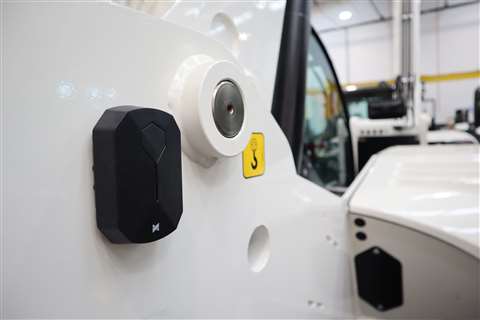 A MachineMax telematics sensor on a machine. (Photo: MachineMax)
A MachineMax telematics sensor on a machine. (Photo: MachineMax)
Trackunit’s Brogaard says that such strategies are increasingly used by firms, as supply chain shortages make it harder for firms to get hold of new equipment.
“During Covid and the supply chain crisis, parts and machines are becoming a rare resource, so the pressure is suddenly really on.
“So you need to get more rental hours out of the equipment that you have. If you can keep a happy customer, save a little bit of money and release 2-3% of equipment utilisation for other jobs you can basically meet a larger customer population.”
Isobel Romara, logistics and fleet manager at Spanish rental giant GAM, goes even further, pointing out that by providing detailed information about the exact usage of each machine, telematics data enables plant hire companies to look at offering customers the possibility of paying for the actual amount of time a machine is used.
“Telemetry provides very useful information instantly that would otherwise be very difficult or impossible to obtain,” she says. “It allows monitoring of actual working hours and opens the way to pay-per-use.”
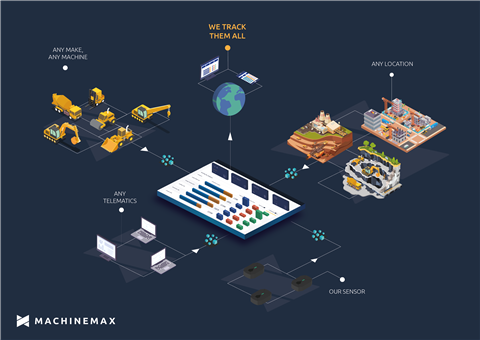 Data sources from MachineMax: data is being used for a range of outcomes, from boosting efficiency to reducing emissions. (Photo: MachineMax)
Data sources from MachineMax: data is being used for a range of outcomes, from boosting efficiency to reducing emissions. (Photo: MachineMax)
Amy Law, marketing manager at UK-based telematics specialist MachineMax, says geography is a major factor in determining how her customers are choosing to use telematics.
“In India customers are most keen to use our trackers to reduce fuel theft. In the US the key driver is boosting productivity – using data to get the project done as quickly and efficiently as possible. And in the UK and Europe, customers are focussed on monitoring and managing their emissions.”
Tracking equipment emissions
Law points to one UK-based plant hire customer which was leasing large amounts of equipment to contractors working on the UK government’s HS2 rail project.
The contractors were able to use data to identify machines not meeting the project’s strict emissions requirements and to ensure that customers were able to swap them with hydrogen-powered machines.
Ranaivoson says that Kiloutou is using its telematics capabilities to provide its customers with real carbon footprint information for each of the vehicles they use.
 Soeren Brogaard, CEO, Trackunit. (Photo: Trackunit)
Soeren Brogaard, CEO, Trackunit. (Photo: Trackunit)
These take into account the actual amount of fuel consumed by each of their rental machines and the exact number of hours worked.
“Telematics is an absolute pre-requisite for being able to report carbon emissions by asset, either fleet wide or per job site,” Brogaard says.
“In some countries it is actually becoming law or a municipal requirement, especially in Europe.
“Even in North America, which tends to be at a bit of an earlier stage on these things, we are seeing that rental companies need to report on carbon emissions on job sites.”
Moreover, Brogaard says, with energy becoming more and more expensive, rental companies are also using this sort of data monitoring as a way of helping customers keep track of fuel, ensuing that it does not get wasted or stolen from sites.
How telematics boosts safety
And, as OEMs continue to manufacture equipment which is more and more IOT enabled, telematics providers are promising their rental customers that the technology will be able to provide them with even more services.
One key area where telematics companies are currently developing a range of new solutions is around the area of jobsite safety.
Rental companies use machine data to spot events like harsh breaking events and use them to identify any potentially hazardous drivers.
Richard Lane, commercial manager at VisionTrack, a telematics company which specialises in dashcam and multi-camera solutions connected via a cloud-based IoT platform says that his company’s clients have improved safety and cut insurance costs by using telematics alongside dashcam footage.
UK-based rental company Speedy Hire is one of Visiontrack’s most high-profile customers.
In 2020, it reported a 35% reduction in road collisions and a 40% fall in the cost of ‘at fault’ claims for its fleet of delivery and service vehicles after it installed VisionTrack dashcams.
Moreover, Lane says that camera footage can be used in the event of disputes with customers over damage to machinery.
Access control for rental equipment
Similarly, Trackunit’s Soeren Brogaard says that many of his customers are using telematics systems to ensure that only authorised users have access to heavy plant and machinery.
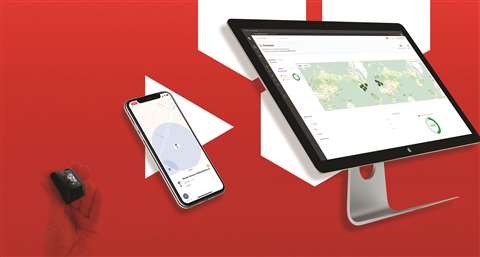 Telematics tools and device interfaces from Trackunit. (Photo: Trackunit)
Telematics tools and device interfaces from Trackunit. (Photo: Trackunit)
“We are seeing many of our larger customers using access control where your training and credentials is a prerequisite for you being able to operate the machine,” he says.
“By authenticating an operator’s training credentials through a centralised database you have that connection between man and machine so you can proactively notch towards better health and safety on construction sites.”
Another area in which telematics is increasingly being used by rental companies says Brogaard is for maintenance.
He says that by using sensor data to determine exactly when machine will require service and maintenance can help save rental companies and their customers both time and money, especially at a time when the supply chain crisis is making it difficult for them to source new parts and equipment.
Nonetheless, Kiloutou’s Ranaivoson says that most firms in the construction industry are currently struggling to use this kind of telematics data in any practical or meaningful way.
He points out that most construction equipment manufactured before 2017 is unable to provide anything other than the most basic data concerning a machine’s location and whether or not it is running.
With most rental companies aiming to keep machinery for around a decade, it will take another six or seven years before they can use this sort of telematics at scale.
“When it’s just available on a few latest machines it is not much use. It is when it is available large scale that is available to do a proper service,” he says.
Predictive machine maintenance
“With the maintenance telematics, we have crunched a lot of data to see whether we should send a text to say if the machine is likely to break down in the next two days because we have received an alert. But, so far, the data has not been clear enough.
“So, we are working with the OEMs to improve the data. This type of data on paper is great but so far in real life it doesn’t work.”
Ranaivoson is confident that, as the data produced by telematics on construction machinery improves, rental companies will be able to rely on it more fully.
As part of this plan, Kiloutou partnered with France-based peer-to-peer telematics provider ShareMat.
The platform allows users to share real-time technical information about each of Kiloutou’s machines via a so-called “digital twin” and the company hopes that in future it will enable different contractors working on the same jobsite to access and share machinery.
Kiloutou’s original strategy, says Ranaivoson, was to offer customers the platform as part of a plan to enable all contractors on a jobsite to access the same machinery – reducing deliveries to and from the jobsite and in turn cutting carbon emissions and the chance of workplace accidents.
However, Ranaivoson says that this service, along with much of the telematics-based technology which rental companies are keen to make use of and to offer to customers, is still some years away from fruition.
“There is always a difference between what you expect from telematics and what data is available,” he says. “We have to recognise that the industry is not yet mature.”
STAY CONNECTED



Receive the information you need when you need it through our world-leading magazines, newsletters and daily briefings.
CONNECT WITH THE TEAM










